The Next NX
UGS NX 5 provides integrated product data management to support design re-use with libraries of reusable components. Read more about NX version 5.
April 27, 2007
By Al Dean
Developers at UGS have added a wide range of functionality to several core areas of NX 5, the latest version of the company’s modeling solution. While we don’t have the room to explore all these areas in detail, were going to examine those that will affect both the existing user community and perhaps influence those evaluating NX as their next modeling program.
The first area in this assessment is the user interface (UI). Rather than try to squeeze efficiency out of the existing UI, the developers have looked at how it presents input options to the user and stripped it down to its core components. Every command has been broken down into building blocks so that a group of standard components is now used to rebuild each operation.
n
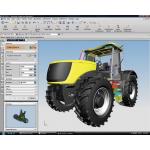 | n
| n UGS NX 5 n | n
n
> > The new UI in NX 5 provides the user with efficiency learning (through common dialog components and processes), clear, workflow-driven operation dialogs, and greatly improves large dataset handling capabilities.
n
By looking at how a user interacts with an application you’ll find a core group of frequently used interaction elements. A good CAD example is geometry selection. While it is part of every modeling operation, the way you do it varies from operation to operation. Typically you wind up learning a new input method. UGS created a reusable block for geometry selection and reuses it wherever geometry selection comes into play meaning that you learn it once and then carry that knowledge into every other command. This has been done on a very granular level for every operation. But alongside this, the team has also looked at how these blocks are presented to the user.
Every operation is now conducted in a dialog that resides onscreen attached to a Command Rail. This is a horizontal graphical device where your command dialog is docked. As you invoke a command, the panel slides out and presents you with a workflow-driven dialog. By using the standardized blocks, along with clear graphical indicators, you’re led through the process of defining that feature. Colors are used to great effect to indicate whether the inputs are complete while advanced options are hidden away, yet can still be accessed easily. What it boils down to is a workflow-driven dialog structure that presents clear information relating to how each operation is conducted and the stage you’re at while exposing the information you require when you need it —and reusing as much knowledge as possible.
Large Assemblies and Pervasive DMU
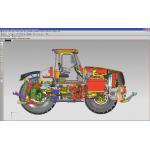 | n
| n UGS NX 5 n | n
nn
< < The new Active Mock-Up tools allow the user to conduct a variety of digital mock-up processes (such as clearance and clash analysis, and extraction path planning) within the same interface ” making it much more suitable to ad-hoc review, rather than a stage gate-based process.
We’ve already mentioned the fact that you can do some forms of assembly analysis within the core NX UI, but this is a really key point for the NX release. UGS has a great deal of knowledge in the digital mock-up arena, both from more recent developments as well as technology it acquired with the EAI acquisition many years ago. The company has its set of visualization and digital mock-up tools, but the problem is that because of the cost of adoption of these tools ” now within the Teamcenter product family as Teamcenter Visualization ” digital mockup is often seen as a stage-gate based process. You complete a design iteration and then switch to another system to carry out your design review.
While that’s valid for the large OEMs of the world, the fact is that digital mockup can provide real benefits when used on an ad-hoc, informal basis. By integrating the efficient dataset handling tools we’re already discussed, along with real-time rendering, with the most commonly used DMU functions, such as clash or interference detect, assembly/disassembly analysis (such as extraction path planning for servicing, etc.), you can make use of it when you need it. And the fact that it’s built into your workhorse tool means that it’ll be used more regularly as part of the product development process, rather than as an external workflow saved for management/client presentations and design reviews. UGS describes this as Active Mock-Up, something that I can’t really argue with.Handling Concurrent DesignThe new Product Interface tools are also related to assembly modeling. They are intended to solve some of the key bottlenecks or concerns when you have multiple users working on complex assemblies. In such instances, it’s often the case that you have the same people working on the same part or using the same geometry. At a base level, coordination of this multiuser scenario is handled by the check in/out data reservation tools found in any data management system, but this often isn’t quite enough. If you look at how assemblies are built, it’s the case that the key interfaces that connect parts together remain constant, while the geometry around them can be in a state of flux.n
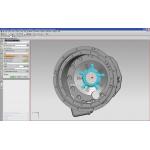 | n
| n UGS NX 5 n | n
nn
> > Although not covered in this article, the new industrial design-related Surfacing tools in NX 5 afford the user much simplified user interaction and dynamic editing, combined with a feature-based approach that allows much greater flexibility. This is especially handy when it comes to editing surface data and those forms built from sculpted models.
What the Product Interface tools allow you to do is manage just the interface geometry and publish that data. So, the system can manage those component interfaces, ensure that they don’t change and if they do, the various parties are informed, while allowing the various parties to work on the other data. These are defined separately (but linked) from the part or sub-assembly files, allowing for a much more intelligent and manageable working environment.Freedom from HistoryAnother key area for NX 5 is the integration of direct model editing technology. This is a hot topic for many vendors either extending their existing tools or jumping on the direct-modeling bandwagon (as well as new entrant SpaceClaim), all working toward the same goal. That goal, if you’re unfamiliar with it, relates to the reliance on history-based modeling technique. While the benefits of history-based modeling are undoubtedly powerful, design changes made early in the history can often cause untold problems when you’re working a complex part. All those granular feature-level relationships that make such systems so powerful can just cause all manner of problems when editing happens early.
n
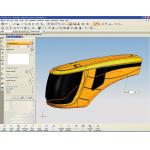 | n
| n UGS NX 5 n | n
< < The new Direct Modeling tools, along with intelligent selection intent, allow you to edit both native and non-native data without relying on access to feature-level history.
Direct modeling changes this by allowing you to make design changes after the fact. So, instead of editing a feature in the history and hoping that it propagates through to the end without problem, you simply edit the geometry and that edit is conducted after the fact.
Each vendor’s take on the process differs and the success of those edits can also vary widely, but how NX handles it is very interesting. It formalizes the edits into features. This means that you can make design changes directly, without having to edit the history ” they’re tagged onto the end and can be edited ” and the power is key in two usage models or workflows.
n
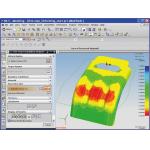 | n
| n UGS NX 5 n | n
nn
> > NX 5 also includes (although not discussed in this article) greater support for the progressive die design workflow, by integrating analysis and simulation that allows the user to predict formability of such components without a huge calculation overhead and generate fast, accurate blank profiles and intermediate shapes.
First, this type of technology is always tagged onto working with non-native data. The tools allow you to edit non-intelligent B Rep geometry without having access to the feature description ” something that you couldn’t do using traditional modeling tools.
Second, and perhaps more importantly, it also allows you to work with complex native data. It might be that you need to make a very simple design change, but editing that at a feature level in the history is not feasible ” you may not be the originating author or it might just be too complex to make that edit in a traditional manner ” this allows you to do so at the end of the part’s history and avoid change-propagation issues.Just the HighlightsTo be honest, we’ve hardly skimmed the breadth of updates in the NX 5 release. What you have here are the real highlights that illustrate where NX is headed and show off some of the work done by the UGS team since the last release. There’s a gamut of enhancements and new functionality in many areas, including a revisit of how industrial design led surfacing is conducted, greater integration and expansion of analysis and simulation into the standard workflow and UI, and improvements made to manufacturing aspects, particularly in the NC programming and progressive die design functionality.
n
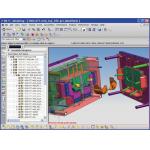 | n
| n UGS NX 5 n | n
nn
While UGS is in a state of flux as a result of the recent Siemens acquisition, the core technology that provides its product development solutions to the market is being actively developed. And in terms of what we’ve covered here, it is showing real signs of thought leadership and innovation.n
< < A tooling mold example from NX 5.n
Al Dean is Technology Editor of the UK’s leading product development and manufacturing journal, MCAD and is Editor of Prototype, for the rapid prototyping and direct manufacturing industry, both available by clicking here. Send your comments about this article through e-mail by clicking here. Please reference “NX 5” in your message. n
Subscribe to our FREE magazine, FREE email newsletters or both!
About the Author
DE’s editors contribute news and new product announcements to Digital Engineering.
Press releases may be sent to them via [email protected].






